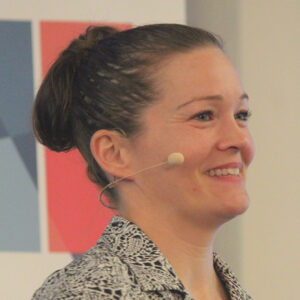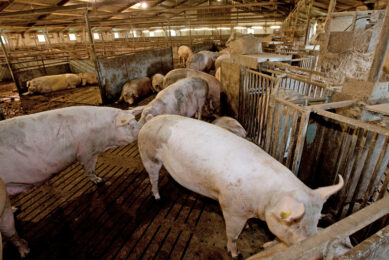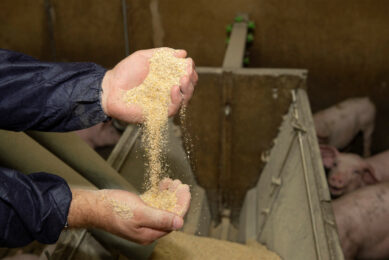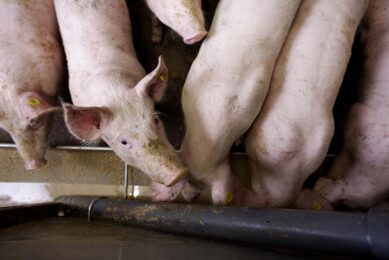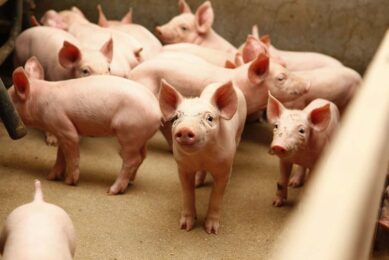4 key lessons for managing large litters
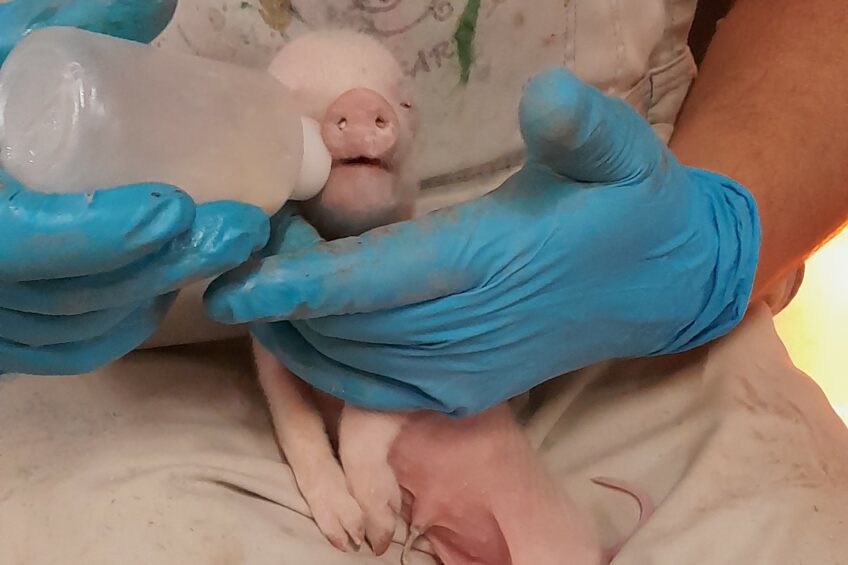
Hyperprolific sows are generating many offspring, but increasingly the question is: how to manage them all, and how to make sure the vast majority reach weaning in good health. In Denmark, veterinary practitioners have been documenting best practices (how to deal with large litters).
Since the number of liveborn pigs per litter in Danish pig production has been increasing year on year, optimised management routines are necessary to keep piglet mortality low and herd health status high. According to calculations by the Danish Pig Research Centre, in 2018 Denmark had an average of 17.2 liveborn piglets per litter – numbers which increased to 18.0 liveborn per litter in 2022.
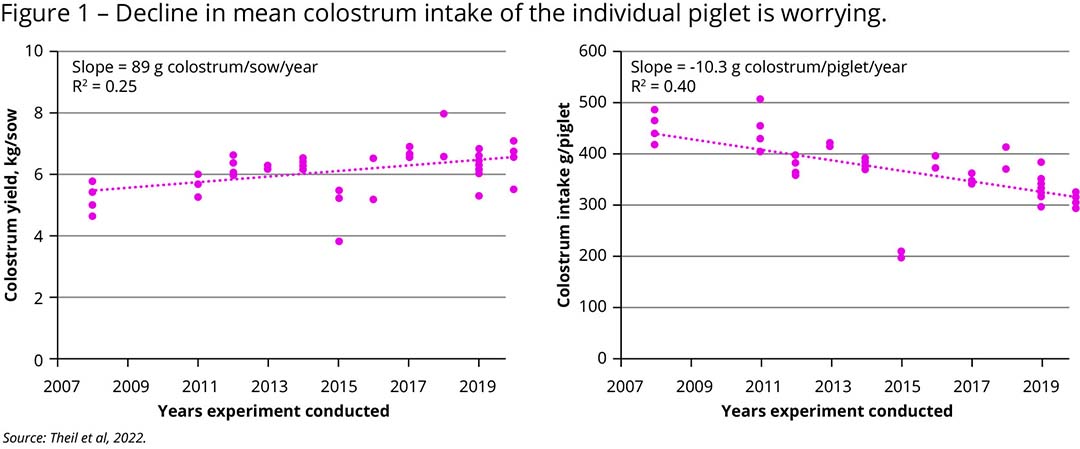
HyoVet swine veterinarians are consulting production systems and farmers which jointly own about 20% of Danish sows. Data from these sow farms have shown an average of 18.4 liveborn pigs per litter in 2022 and the best 10% of farms even reached 19.4 liveborn per litter. Researchers have proven that the colostrum production per sow is not increasing enough to supply all liveborn piglets with a sufficient amount.
Colostrum guaranteed piglets
In the field it is therefore important to focus on moving only “colostrum guaranteed” piglets when equalising teams by numbers and sizes. Colostrum guaranteed piglets are the ones that most likely did get colostrum, since they are the first born and, as such, they can be identified with a colour.
In 2018 and 2022, HyoVet conducted surveys regarding management routines in farrowing units. The best producing sow herds with an average of 38.3 weaned pigs per sow per year (37.1-40.8) were included and the changes related to their handling of large litters are presented below.
Performing split suckling
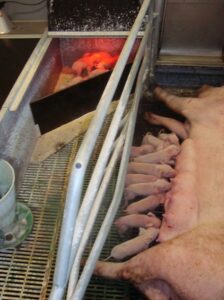
In Denmark in 2022, split suckling was practiced more than was the case in 2018. The practice means that the smallest 12 piglets of a litter have time at the udder of the sow for 30 to 60 minutes. A 10% increase to 68% performing split suckling was recorded in the 2022 survey.
Counting functional teats before equalising
Counting the teats before equalising the litters was not intensively done in 2018 with only 20% of the questioned producers spending time on that. In 2022 it proved to have become crucial to know how many piglets a sow potentially can take care of due to the high number of liveborn piglets. In 2022, 72% were routinely counting teats and thus maximising the number of piglets per sow when equalising.
Using sow colostrum for smallest pigs
Spending time on collecting sow colostrum for the smallest piglets born alive has been a game changer to ensure high viability and ensure low mortality in this specific group of piglets. In the 2018 survey 81% of farms used energy supplementation and only one farm used sow colostrum to save the small and weak piglets. The 2022 survey showed that 40% of the producers started using sow colostrum and 48% used energy supplementation.
In 2023 milking sow colostrum was extensively performed in pig houses since so many producers have had good experiences and results with that approach. It is possible to collect close to 800 ml from one sow within ten minutes when applying the right technique. A sow that has just finished farrowing or a sow still farrowing is preferably milked when she is standing up to eat. At that moment it is easy for two people to milk from each side of the sow. The milk can be stored in small tubes. Minimum amounts of 10 ml per piglet can be given orally 1, 2 or 3 times during the first day of life.
On days with many small liveborn piglets it is necessary to milk more sows, so colostrum is not “stolen” from one litter but only distributed more evenly among the piglets.
Considering a “1-step” nurse sow strategy
When dealing with high prolific sows, a standard operating procedure is needed to make nurse sows match the excess number of piglets. Most farms use a 2-step strategy. That includes weaning piglets at 21 days of age, after which sows with 21 days of lactation will take care of piglets that are 5 to 7 days old. Sows with 5 to 7 days of lactation then receive additionally born piglets, as soon as they have had colostrum at their own mothers.
In 2018, most (77%) of the questioned producers used such a 2-step nurse sow strategy. 4 years later, it is still the most preferred way to handle the excess number of pigs being born (60%), but more used a one-step strategy with first and second litter sows taking care of 2 teams of piglets within a total of 42 lactation days. With that procedure, fewer litters or sows are moved around in the pig house and the group of sows to choose a nurse sow from is bigger, since only 1 and not 2 sows are needed for every extra litter being collected from the newly farrowed litters.
Now there is an increasing need to ensure that piglets have got enough time to take in colostrum from their own mothers before being moved to another sow. That other sow can for instance be a nurse sow or a sow that is more capable of taking care of small piglets for instance.
Registration of the onset of farrowing and colouring the first-born piglets helps employees to decide which pigs at what time should be moved to the nurse sow and when equalising is allowed. As close to 12 hours as possible at piglets’ own mother is desirable before moving them away.
Sow cards are marked with the code A, B and C and the piglets are sprayed with a specific colour according to the time of farrowing. The number of nurse sows needed on a specific day is already known in the morning for A and B teams. It is preferred to move sows as soon as possible and make everything ready for them to get the extra piglets during the day according to Table 1.
High quality and low mortality
With the high number of liveborn piglets per litter achieved in 2022 and 2023 it is crucial to look at Standard Operating Procedures in the farrowing unit. The intake of colostrum per piglet needs a different assisted approach from employees with split suckling and distribution of sow colostrum for smallest piglets. Due to more nurse sows being needed every sow must take care of every piglet that she can and the industry may look into production systems using a one-step nurse sow approach even more in the future. It has not become easier to take care of piglets from highly prolific sows, but when the right procedures are in place it is possible to obtain high quality and low mortality.
The contents of this article are based on a presentation given at the “Think Piglet” summit in Copenhagen, Denmark, 21-22 September 2023.
The Pig Progress Newsletter
Sign up for our newsletter and receive all our need-to-know content three times a week.






